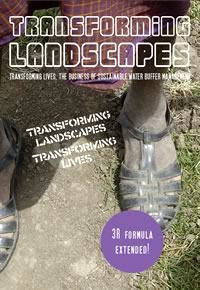Ganado o Desierto (2023)

The fight to reverse climate change is putting animals in the crosshairs. The purpose of this documentary is focused on showing the use of livestock for the regeneration of pastures, soils, trees and water. Good livestock management shows itself in a real way as a solution for the restoration of ecosystems and rural economies.
Whole-System Approach Managing Grazing to Restore Soil Health and Farm Livelihoods

This paper is a literature review on the ecological impacts of grazing, and finds that where managed properly (employing a “whole-systems approach” and “adaptive, goal-directed grazing methods”) livestock are essential to ecosystem service sustainability and improvement. Soil organic matter increases were sufficient to yield a net sink of 2 tons of carbon per hectare per year.
A half-century of Holistic Management: what does the evidence reveal?

This comprehensive literature review describes the main tenets of HM and addresses the longstanding and unresolved controversy over its legitimacy. It additionally provides a meta-analysis that not only provides an up-to-date review of the multidisciplinary evidence and ongoing arguments about HM, but also provides a novel explanation for the controversy.
Effects of holistic grazing management on milk production, weight gain, and visitation to grazing areas by livestock and wildlife in Laikipia County, Kenya

This paper studied the effects of holistic planned grazing on milk production, weight gain, and visitation to grazing areas by livestock and wildlife in Laikipia County, Kenya. Results found that, with significantly higher numbers of grazing animals, the number of wildlife more than doubled, average milk yields increased, and animal weight gain nearly doubled compared to traditional grazing areas.
Profile of good stewardship: the Rafter F Cattle Company (2001)

This case study of a ranch in New Mexico, USA by the Quivira Coalition features Rafter F Ranch—a 4,779-hectare property in San Jon, New Mexico. Net income per acre grew from $5.84 in 1984 to $22.5 in 1992.
Controlled intensive grazing: Savannah Grasslands, Africa

This chapter appears in a book about sustainable land management, the development of water buffers, and the business case in favor of investment in natural resource management.
The Need for a New Approach to Grazing Management – Is Cell Grazing the Answer?

This paper investigates the comparative vegetative impacts of cell grazing and continuous grazing on three properties in Australia during the 1990s and finds cell grazing superior in all measured parameters, including plant basal diameters, most desirable species, contribution to dry weight, and percentage ground cover. It is reasoned that these vegetative impacts may have long-term benefits with respect to ecosystem function, including erosion control, nutrient cycling, hydrological function and the stability of animal production.
Steps toward Sustainable Ranching: An Emergy Evaluation of Conventional and Holistic Management in Chiapas, Mexico

Members of a holistic ranching ‘‘club” in the Frailesca region of Chiapas, Mexico have moved away from decades of conventional management by eliminating the use of burns and agrochemicals believed to decrease the biodiversity and forest cover of ranch lands, and by implementing sophisticated systems of rotational grazing and diversifying the use of trees. Holistic ranches were found to have double the “emergy” (embodied-energy or “energy memory”) sustainability index values of conventional ranches. The results from this study show that productivity can be maintained as the sustainability of rural dairy ranches is increased, and that local knowledge and understanding of the surrounding ecosystem can drive positive environmental change in production systems.
Sustainability of holistic and conventional cattle ranching in the seasonally dry tropics of Chiapas, Mexico, Decision Making

Eighteen (18) conventional and seven (7) holistic, dual-purpose ranches were studied using three sets of sustainability metrics combining economic, social, technological, and environmental indicators. Holistic ranchers have more pasture divisions, higher grazing pressure, greater lengths of time between pasture burns, greater milk productivity, larger forest reserves, lower cow and calf mortality, purchase less hay and feed, and use less herbicides and pesticides than their conventional neighbors, with holistic ranches demonstrating superiority for nine of ten indicators. Higher soil respiration, deeper topsoil, increased earthworm presence, more tightly closed herbaceous canopies, and marginally greater forage availability were found in holistic ranches, suggesting that holistic management strategies are leading to greater ecological and economic sustainability.
Herd Impact

Husband and wife ranchers Emry Birdwell and Deborah Clark have been going against the grain of North Texas ranching for decades – hiding their ability to raise many, many more cattle per acre than any of their neighbors.
